The Global Center for Journalism and Democracy (GCJD) joined universities and organizations around the world to celebrate World Press Freedom Day. The event took place on the campus mall on April 30th from 10 a.m. to 2 p.m. to reach the largest number of students as possible.
World Press Freedom Day was proclaimed by the UN General Assembly in December 1993. Officially, it is celebrated on May 3rd, which falls on a weekend this year. An international conference will be held at UNESCO Headquarters in Paris on May 5-6th.
World Press Freedom Day presents an opportunity to celebrate the fundamental principles of press freedom. It also provides an opportunity to assess the state of press freedom around the world and to pay tribute to journalists who are missing, have been wounded, or lost their lives in the line of duty.
In many countries, publications are censored, fined and shut down for trying to report the truth. Journalists, editors and photojournalists are routinely harassed, and detained.
The focus of this year's celebration is on the media's importance in development. This is integral to the work of the GCJD. The center was founded on the principal that a free press is a powerful development tool and that the integrity and sustainability of good journalism is essential to any democracy.
SHSU Mass Communication students enrolled in the GCJD workshop class organized a student demonstration and a memorial to those journalists who were killed while doing their jobs last year.
GCJD Workshop student Cody Lewis reported on the demonstration here.
Students will also introduce the campus to six journalists from around the world who they believe symbolize the many sacrifices journalists make.
"Now, I'm not naive to the situation" said Shaquira Martin, one of the students working on the event. "There were journalists in Syria released after two years. I don't think I could make it in jail for a month" she added.
That is precisely the kind of awareness GCJD is hoping to achieve. "It is our hope that our students will gain a new perspective about what it takes to ensure a free press" said Executive Director Kelli Arena.
This is the second year in a row that GCJD has officially been recognized by the UN as a participant in World Press Freedom Day. Last year, students created an interactive, multimedia report about the status of press freedom around the world.
Read the Reports:
- Amanda Lindhout
- By: Alexis Bloomer
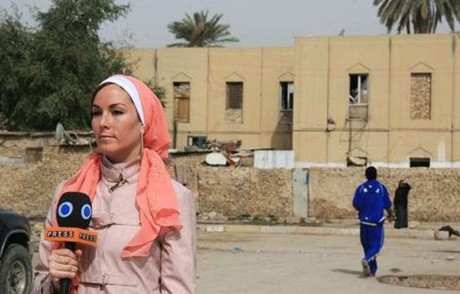 Amanda Lindhout is a Canadian award winning humanitarian, social activist, public speaker, journalist, writer and founder of the Global Enrichment Foundation.
Amanda Lindhout is a Canadian award winning humanitarian, social activist, public speaker, journalist, writer and founder of the Global Enrichment Foundation.
“I always wanted to be a world traveler,” she said. Lindhout began her career by working for Press TV, an Iranian Government backed television station. Quickly, she realized she wanted to get closer to the action. So she chose to travel to Somalia. One of Lindhout’s close friends, Kelly Cox, said that Lindhout felt that it was important to travel to Somalia, because there were so many people that needed help and were being neglected. More exposure might get them the help they needed. Somalia had no formal government for twenty years at that point. On the plane ride over, a man told Amanda that she was crazy for going to Somalia, her head alone was worth half a million dollars. The warning did not stop her.
On August 23, just two days after she arrived in Mogadishu, Amanda Lindhout and
Nigel Brennan, a freelance Australian photojournalist were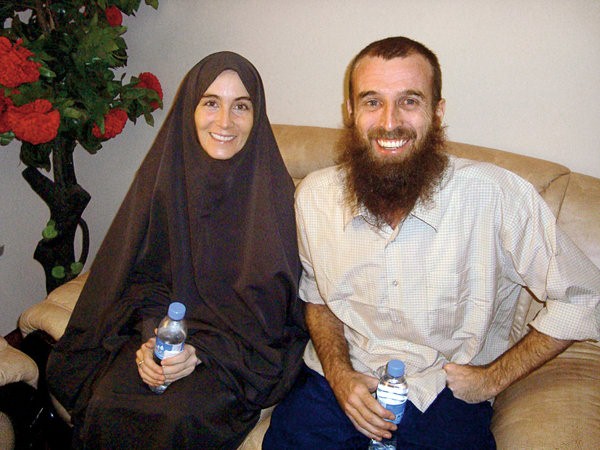 kidnapped along with their Somali translator. The group was on their way to conduct interviews with IDP camp , when gunmen stopped them.
kidnapped along with their Somali translator. The group was on their way to conduct interviews with IDP camp , when gunmen stopped them. 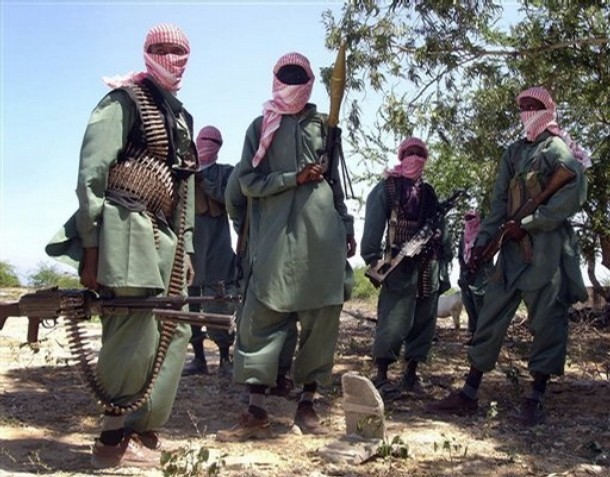 Islamist insurgents in southern Somalia kidnapped Amanda and members of her entourage. At the time of her capture, Lindhout was not affiliated with any news organizations other than a small Alberta publication. Lindhout told Dateline that she was looking out her window and all of a sudden, the car stopped and gunmen surrounded her car and she was pulled from her car and was facedown in the dirt. The abductors were a group of teenage insurgents from the Hizbul Islam fundamentalist group .
Islamist insurgents in southern Somalia kidnapped Amanda and members of her entourage. At the time of her capture, Lindhout was not affiliated with any news organizations other than a small Alberta publication. Lindhout told Dateline that she was looking out her window and all of a sudden, the car stopped and gunmen surrounded her car and she was pulled from her car and was facedown in the dirt. The abductors were a group of teenage insurgents from the Hizbul Islam fundamentalist group .
On September 17, Al Jazeera featured footage of Lindhout and Brennan in captivity surrounded by men with guns. Then on October 13, the group demanded a ransom of $2.5 million in American currency by October 28th. By February 23, the Canadian Association of Journalists urged the Prime Minister to help secure the release of Lindhout and Khadija Abdul Qahaar, another Canadian woman who was kidnapped in November.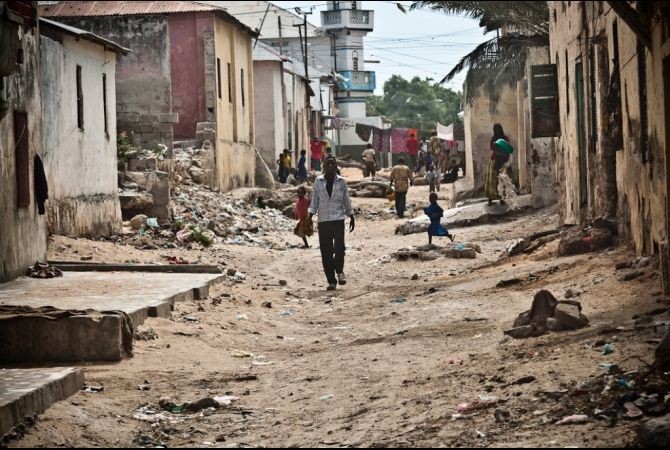 By June 10, 2009, CTV News received a call from an emotional Lindhout who read the statement, "My name is Amanda Lindhout and I am a Canadian citizen and I've been held hostage by gunmen in Somalia for nearly 10 months. I'm in a desperate situation. I'm being kept in a dark, windowless, room in chains without any clean drinking water and little or no food. I've been very sick for months without any medicine.... I love my country and want to live to see it again. Without food or medicine, I will die here.”
By June 10, 2009, CTV News received a call from an emotional Lindhout who read the statement, "My name is Amanda Lindhout and I am a Canadian citizen and I've been held hostage by gunmen in Somalia for nearly 10 months. I'm in a desperate situation. I'm being kept in a dark, windowless, room in chains without any clean drinking water and little or no food. I've been very sick for months without any medicine.... I love my country and want to live to see it again. Without food or medicine, I will die here.”
During captivity Lindhout endured several beatings that included bruises and broken ribs. She says she was repeatedly raped. Lindhout was the only female in a group of sixteen men, so she always feared her life would be taken first. During captivity, Lindhout and Brennan attempted to escape with fingernail clippers one day and when they were finally on the outside, they were caught and placed in separate rooms. Lindhout says that her room was the size of a mat and she was no longer able to walk around, at one point they hung her up by her arms and legs and left her for three days.
On November 25, 2009 after 460 days as a hostage, their families, through a private firm that deals with kidnapping ransoms, released Lindhout and photojournalist Brennan following a payment.
Lindhout was hospitalized for two weeks and was treated for acute malnourishment.
Today, Lindhout travels around the world and engages in numerous speaking engagements. She is also the international best selling author of her book, “A House In The Sky.” You can learn more about Amanda Lindhout by visiting her website.
Dateline did an exclusive interview with Amanda Lindhout.
- Austin Tice
- By: Cody Lewis
Imagine being kidnapped and imprisoned for simply doing your job. This is exactly what happened to 31-year-old Texas Journalists Austin Tice, who has been missing since August of 2012. He was reporting in Syria when he disappeared.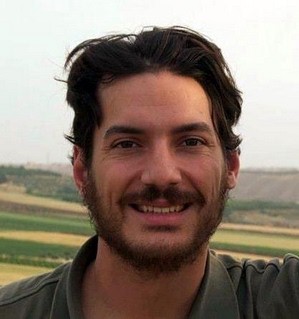
According to their family website, Tice’s family lost contact with him on August 13 and has heard absolutely nothing from him since then.
Tice, a Houston native, is the oldest of seven children and a former captain in the United States Marine Corps. Tice was awarded the 2012 George Polk Award for War Reporting.
Tice was attending Georgetown Law School when he was chosen to travel overseas to cover the conflict in Syria. Before his family lost contact with him, he was planning to travel to Beirut, Lebanon. This makes the search for Tice even more puzzling, seeing that he could be in either Syria or Lebanon.
“We continue to seek support to find and bring Austin safely home,” the Tice family said on their website. “We continuously give thanks for everyone who has and is helping us make his return a reality.”
Marc and Deborah Tice, have traveled to both Syria and Beirut in hopes of finding someone who may have seen Austin or know something. They have spread the story of his disappearance far and wide. They have been in touch with the State Department, numerous news outlets and have set up a website in hopes someone will contact them about their missing son.
“We will never give up,” Marc Tice said. “We will continue to do what is needed to gain any information on the location of our son.”
Marc and Deborah Tice still reside in the greater Houston area.
Unfortunately, Tice’s story is not unique. Syria was listed as the deadliest country for Journalists by the Committee to Protect Journalists. In 2013, 28 journalists were killed there for doing what they love, reporting the news.
- Ghislaine Dupone and Claude Verlon
- By: Shaquira Martin
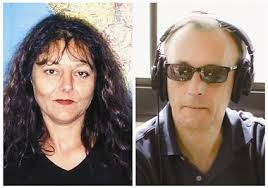 Ghislaine Dupone (51) and Claude Verlon (58), two veteran French journalists for RFI were kidnapped and killed in northern Mali last year in the remote town of Kidal. BBC News reported that the brutal killings shocked France, and prompted French President Francois Hollande to call the killings "despicable".
Ghislaine Dupone (51) and Claude Verlon (58), two veteran French journalists for RFI were kidnapped and killed in northern Mali last year in the remote town of Kidal. BBC News reported that the brutal killings shocked France, and prompted French President Francois Hollande to call the killings "despicable".
Gunmen seized the journalists as they left the home of Ambery Ag Rhissa, a leader of the National Movement for the Liberation of Azawad (MNLA), a group of ethnic Tuareg separatists.
"I went out to see what was happening. Once I got to the door, I saw a car, a pick-up, parked next to theirs. There was a man on the ground who had a weapon. He immediately pointed it at me and said: "Go back inside, go back in!" said Rhissa.
French troops set up checkpoints and conducted a widespread search for the journalists. A patrol discovered their bodies on the street not far from the vehicle they were abducted in. They had been shot several times and the head of the armed forces in Kidal said their throats had been slit.
Al-Qaeda in the Islamic Maghreb claimed responsibility for the slayings and French reports on the murder described the attack as brutal.
The kidnapping occurred less than a week after four French hostages were released by Al Qaeda in the Islamic Maghreb in neighboring Niger after being held for over three years in the desert, and after payment of a substantial ransom, according to reports.
The situation in Mali remains volatile. The government is unstable, and extremists still control some areas including Kidal.
Dupont and Verlon were the first journalists killed in Mali since 1992 according to the Committee to Protect Journalists. Globally, at least 70 journalists lost their lives last year according to CPJ. Their deaths remind us in the most painful way, that the fight for truth is harder than ever.
- Muhamed Sabry
- By Kizzie Frank
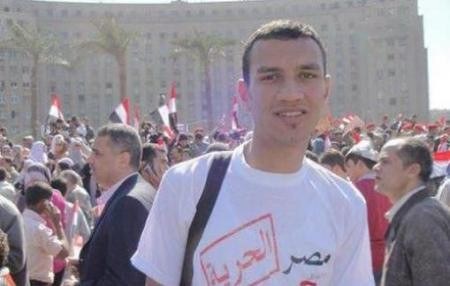 In the land of the Sphinx and pyramids, journalists are being jailed and mistreated for reasons most would consider unimaginable.
In the land of the Sphinx and pyramids, journalists are being jailed and mistreated for reasons most would consider unimaginable.
Muhamed Sabry is one of them. He is the first Egyptian journalist to be tried in a military court rather than a civilian court simply for doing his job.
Last January, Sabry was on assignment for Reuters working on a story about land ownership regulations in North Sanai. He was detained by armed forces.
“I was filming there and they confiscated all my things. Camera, memory card, everything” said Sabry.
He was charged with trespassing and filming in a prohibited military zone. He sat in the military intelligence office in Rafa for hours. He was blindfolded and Egyptian soldiers threatened him with “electric shock”.
Sabry was a newlywed of only 3 weeks when he was detained. His wife, whose name he wished not to release, had begun to contact every media outlet within reach to get Sabry the legal representation he needed.
Groups including Amnesty International, No Military Trials, Human Rights Watch and the Committee to Protect Journalists all rallied to support Sabry arguing civilians should not be tried in military courts.
According to Human Rights Watch, Article 198 of the new Egyptian constitution reads: "Civilians may not be tried before the military justice system."
After about 15 hearings, he entered the courtroom and saw 10 lawyers that were there to defend him.
“I thought, ‘I’m not that important!’” he said. “But it was very touching. I admit, I cried.”
Sabry was sentenced to a suspended six -month prison term. The conviction remains on his record.
While Sabry did not serve any time, he’s been emotionally scarred by the experience. Sabry says he’s afraid to leave his home to work.
His colleague, freelance journalist, Shahira Amin, says intimidation of journalists is a travesty.
“His work is very valuable as there is little reporting from the volatile region. Sinai Peninsula is a hotbed for militant insurgency,” said Amin.
Egypt, particularly Sinai, is currently in a state of unrest, with riots in the streets, drug trafficking and further detainments of journalists who report there.
Media coverage from Sinai was restricted at the time. Now, it is completely banned.
In addition to the media ban, cell phone connections are blocked almost all day. On occasion, tweeting and face booking is allowed.
Sabry says all the news that leaves Sinai is filtered through “the mouth of the military spokesman.”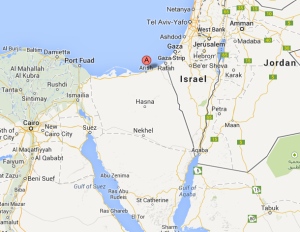 Sabry is currently planning to move to Cairo to for work ,but he realizes there are challenges there too.
Sabry is currently planning to move to Cairo to for work ,but he realizes there are challenges there too.
Just recently, two journalists were shot while covering a student riot at Cairo University.
“They allow you to cover news, but they target journalists around protests. They catch them and do things they don’t want the media to see,” said Sabry.
Many journalists in Egypt don’t see things getting any better. “ I’m disappointed and frustrated” says Shahira Amin. “Three years after our uprising, little has changed in the country and there’s been a reversal in the gains made. There are clear attempts by the military backed authorities to reinstate the police and security state that existed under Mubarak “ she added.
VIDEO: Unrest in Egypt
Despite the situation, many journalists are determined to continue to challenge authorities to tell the world what is going on in their country.
Sabry has joined their ranks. You can find him on Twitter and occasionally he posts to YouTube.#press4FREEDOM
- Tetyana Chronovol
- By: Steven Snook
 Exposing the truth can be a heavy burden, but it is a burden
Exposing the truth can be a heavy burden, but it is a burden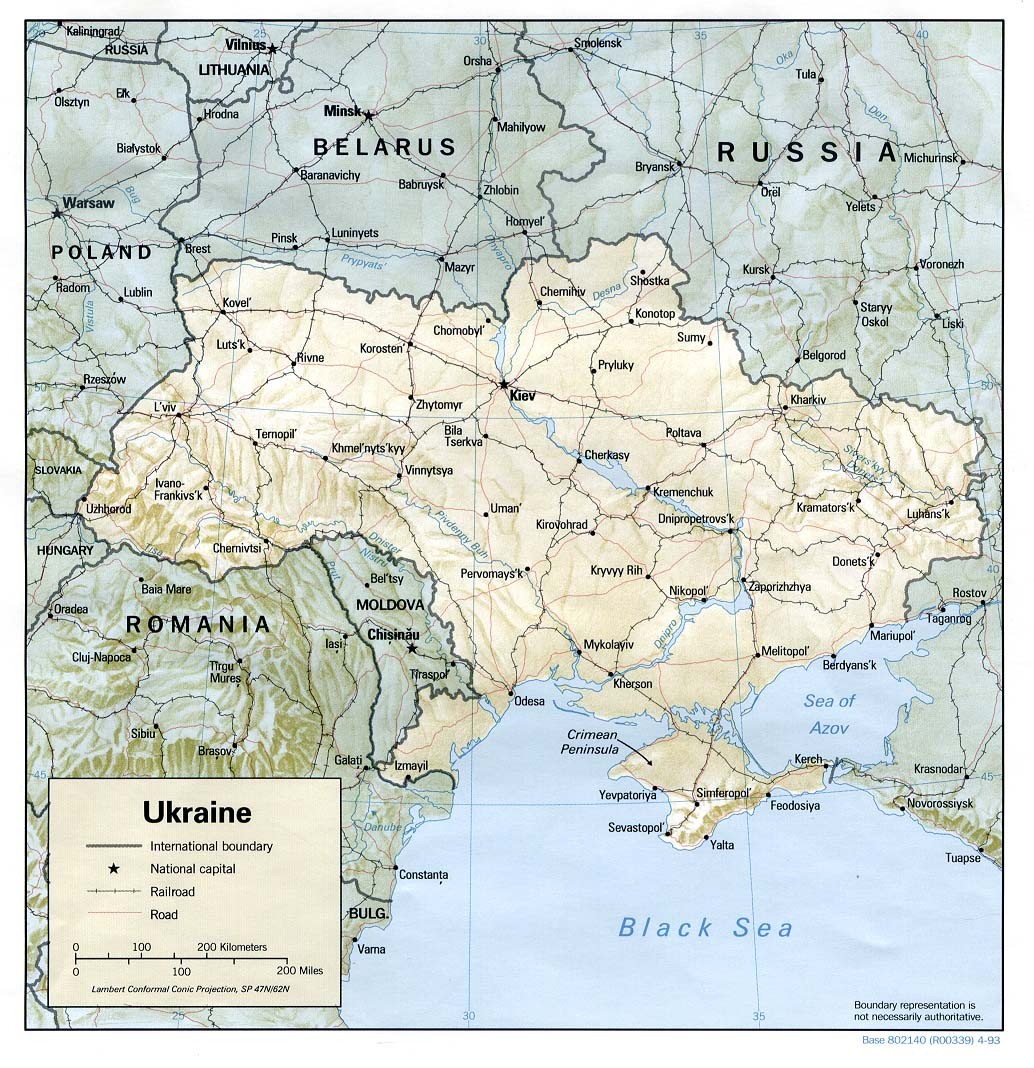 many journalists believe is worth bearing to keep the public informed.
many journalists believe is worth bearing to keep the public informed.
Tetyana Chornovol is one of them. She’s a free-lance journalist in the Ukraine who is best known for her stories about government corruption and for her social activism.
On December 25th 2013, she was attacked by a group of men who blocked her path, beat her, and left her for dead.
A video from Tetyana Chronovol’s dash camera of the suspects who ran her off the road can be found here.
According to the New York Times she said, “Her face battered and bloodied, with one eye blackened and shut, and her lips hugely swollen and cut.”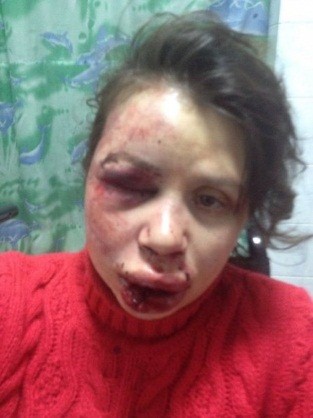
Two suspects have been placed under arrest with another still missing. In this YouTube videoChronovol lies on a stretcher explaining how the attackers did not say a word as they beat her.
The attack sparked a protest at the Internal Ministry where more than 300 people assembled, holding pictures of Chronovol. News sources including the New York Times and the Kyiv Post reported that just hours before her attack she posted a story about a luxurious home being built outside Kyiv that belonged to Vitaliy Zakharchenko, the former Ukraine Minister of Internal Affairs.
Whether Vitaliy Zakharchenko is linked to the attack on Tetyana Chronovol is still unknown but police do suspect the reason she was targeted was because of her anti-government viewpoint.
Despite the savage beating, Chronovol still works as a journalist and even ran for parliament in the Ukraine.
The corruption in the Ukraine is reportedly rampant, and the United States plans on giving the Ukrainian government $50 million to help fight the corruption.
For more information on how journalists are treated in the Ukraine click here.
Here are the online news sources Tetyana Chronovol has worked for. They are best viewed in google chrome using the page translation feature as everything is in Russian. The first link is to a list of stories Chornovol has written.
Additionally, Tetyana Chronovol has been affiliated with the following activist groups: - Yara Abbas
- By Sehar Tejani
Would you risk your life for your work? Are you passionate enough to give your life for your work? Yara Abbas was. She was dedicated to informing the world about what was happening in her country.
"Yara will remain alive in the hearts of freedom-lovers, for she embodied a model of a diligent and devoted journalist," her father told the Huffington Post.
Abbas was a Syrian war reporter for Al- Ekbhariya, a privately owned Syrian News Channel. She was well known and had covered the Battle of Aleppo 2012 embedded with the army. The conditions at that time were so bad that she often had to sleep on the streets but was determined to get the story. It was that passion that led to her death.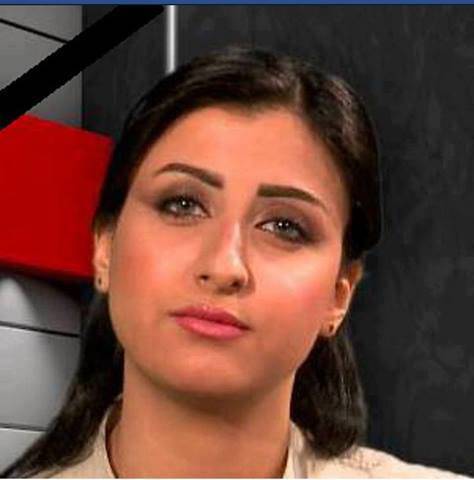
On May 28, 2013 , Abbas had traveled to the Lebanese-Syrian Border to report on the conflict. While she and her team were driving to the city of Al-Qus
ayr, a rebel sniper open fired on the vehicle they were in. Abbas was killed. Her cameraman Osama Dayoub and driver Badr Awad were injured in the attack.
A writer for the Huffington Post had interviewed Abbas just three days before her death.
“She was a striking young woman in her mid-20s, slender, tall, and huge green eyes framed by her long dark hair. Most notable thought were her immaculately manicured long fingernails. A solitary girlish vanity on the front lines of combat, I grinned to myself,” Sharmine Narwani said.
The attack happened near the military airbase of Al-Daba’a which is located near the town of Qusair in HOMS Province, an area near the Lebanese border that is the site of intense fighting between the Syrian army and rebel fighters.
The country’s Information Ministry offered no further details, but the pro-rebel Syrian Observatory for Human Rights claimed that several members of her TV crew were also wounded in the attack.
Abbas was one of 28 Journalists killed in Syria in 2013. The majority of the victims were civilian journalists or local freelancers working for professional media. It remains one of the most dangerous places for journalists in the world.
Global Center for Journalism and Democracy
Dan Rather Communications Building, Room 201, Huntsville, TX 77340
